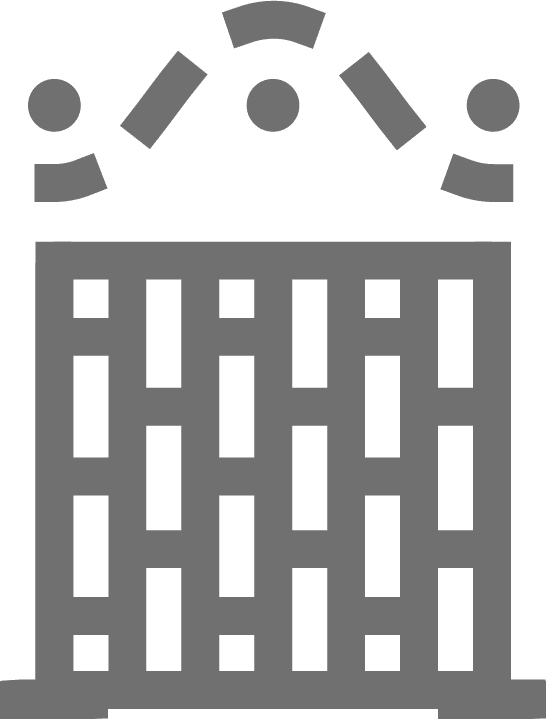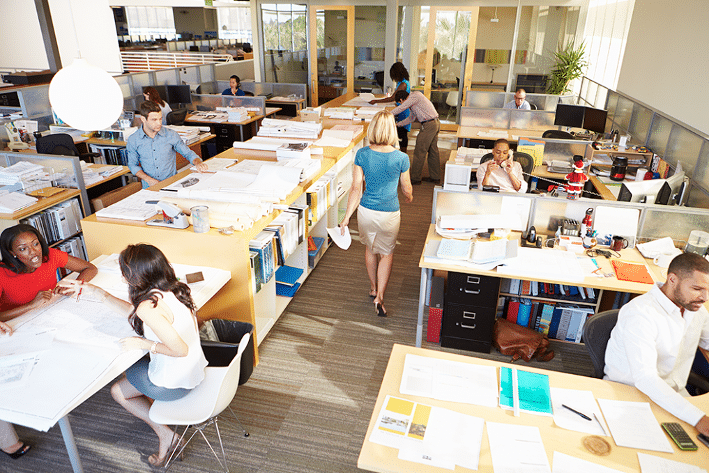The feedback from offices with an open office design is relatively consistent — there is an increasing need for privacy. On a more positive front, the open office has been a catalyst for employees gaining control over where and how they work. Find a common workspace too noisy? If noise-cancelling headphones aren’t in hand, many workers will opt to find a quiet space or an empty conference room to complete tasks that require focus. What the open office compromised in quality it made up for in stronger levels of collaboration and cultural cohesion. This doesn’t mean privacy can’t make a much-needed comeback, however. Here are three quick improvements dealers can make to change their open office design for the better.
Discover the best way to optimize your space with our latest guide.
1. Establishment of “Divide” Space — Private Spaces for Isolation
When we say “private spaces,” we’re not exactly talking about the traditional private office. While there is still a space for the singular ownership of private offices, private spaces in an open office design will generally be more communal. These give workers the opportunity to take advantage of individual privacy as they need it. This prevents fights over conference room space, sometimes the only space for solitude in open offices. Using wall dividers that effectively absorb sound while eliminating visual distractions are a must for a “divide” space.
2. Establishment of “Zone” Space — The Argument for the Lounge
“Zone” spaces are making more frequent appearances in the open office. When positioned as the centerpiece of an open office design, this is not only a place for informal gatherings or meet-ups, but also a workspace for workers that enjoy the stimulus. Taking control of your workspace as an employee can also mean being in the center of the hustle and bustle if it suits your work style. Lounges, cafés and game rooms can also do wonders for employee bonding and the strengthening of company culture. As a “fun” space, it’s also an underrated talent recruitment tool, especially among younger demographics.
3. Establishment of a “Dialogue” Space — Promoting the Impromptu
Creativity is an interesting phenomenon in that it is often spontaneous. Having a space that embraces impromptu meetings and the spontaneity necessary for creativity to thrive can help companies feed off innovation. Like “Zone” spaces, these are areas are perfect as design centerpieces. They should be intimate and private, but also accommodating for collaboration in a group setting. Office partitions that allow the entrance natural light are perfect for these spaces.
Adapting for the Dynamic Open Office Design
Office partitions are powerful tools that come in handy for more than establishing privacy, but also for defining the functions of spaces. As end users grow and establish their workflows, giving them the power to define their own “divide,” “zone,” and “dialogue” spaces will go a long way towards building a positive dealer reputation.





















